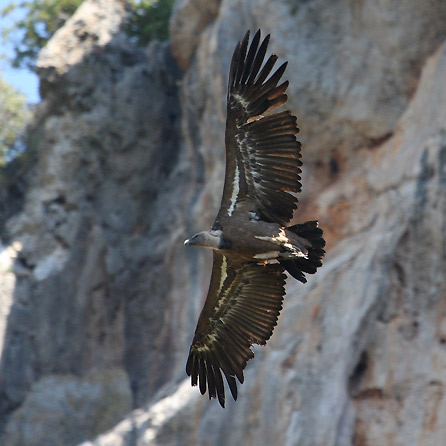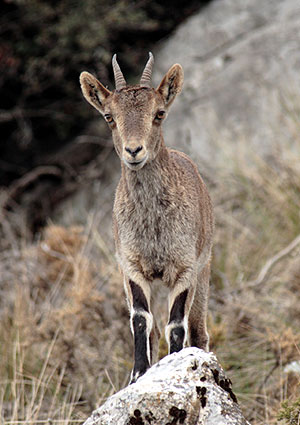The Caminito del Rey walkway in Málaga is world-famous for its dramatic cliffs and dizzying footbridges. But this route through the Desfiladero de los Gaitanes Natural Area also offers one of the best opportunities in Andalusia to spot wildlife. From soaring vultures to wild goats, colourful butterflies, and rare Mediterranean plants, the wildlife of the Caminito del Rey is as impressive as the scenery.
Looking for tickets for the Caminito del Rey? Find out everything you need to know here.
Even better, get a guided tour from a local guide!
If you’re planning to walk the path, here’s some of the wildlife you might encounter.
Birds of the Caminito del Rey: Raptors and Cliff Dwellers
Birdwatching is one of the highlights of the Caminito del Rey. The steep rock faces and thermal air currents create the perfect home for raptors. Keep an eye on the sky for:
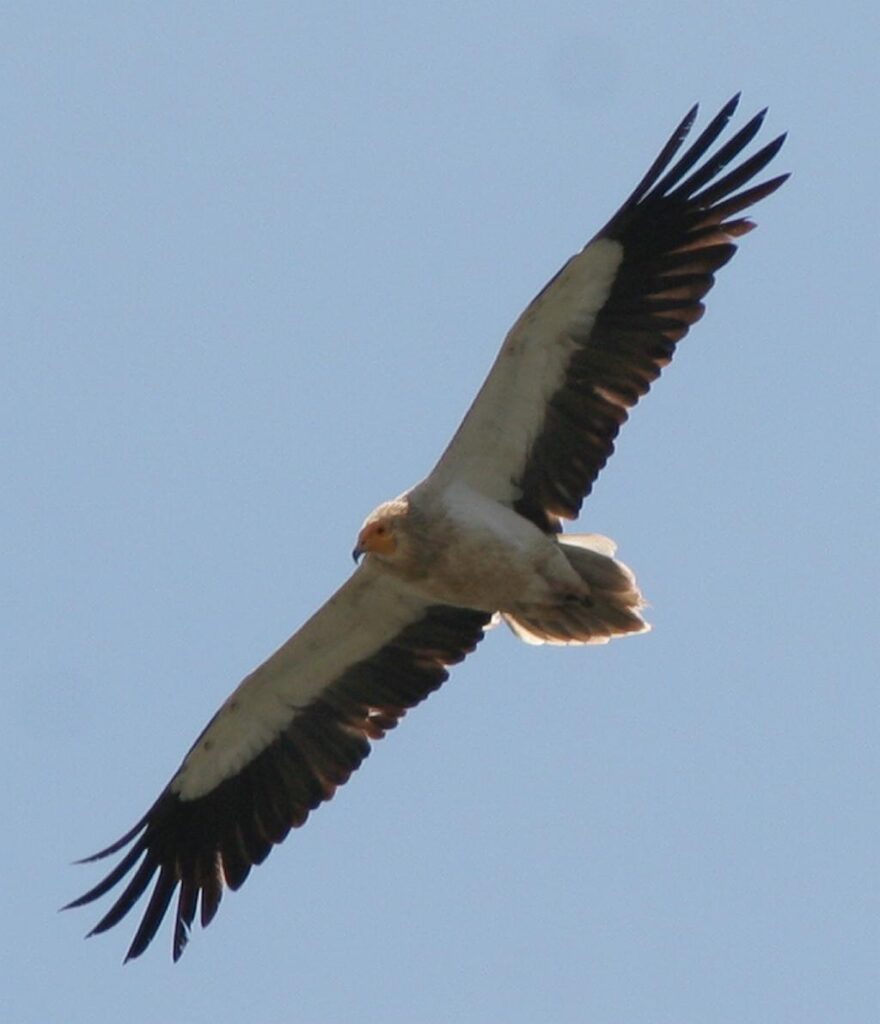
Look for the distinctive wedge-shaped tail, which makes it easy to tell apart from the booted eagle. The latter shows a rounded, fan-like tail when seen at a distance, while the vulture’s tail narrows to a point.
- Griffon vultures – with a wingspan of nearly three metres, they are the most common sight above the gorge.
- Golden and Bonelli’s eagles – powerful hunters that nest in the rocky cliffs.
- Peregrine falcons – among the fastest animals on earth, often spotted darting through the canyon.
- Egyptian vulture (Neophron percnopterus) – smaller than other vultures, with striking black-and-white plumage and a wedge-shaped tail. Although numbers have fallen, they still nest near El Chorro.
- Rüppell’s vulture – a rare African species that has recently established itself in the area.
Because the walkway passes directly beneath these cliffs, you’ll often see vultures and eagles gliding close overhead.
Animals Along the Caminito del Rey Walkway
The rocky cliffs and Mediterranean scrubland are home to several mammals, though they can be harder to spot than the birds. Look out for:
- Spanish ibex (wild goats), famous for their ability to climb sheer rock faces.
- Mouflon (Ovis gmelini), introduced from Mediterranean islands, with males sporting impressive backward-curving horns. They usually form herds that gather during the mating season between autumn and winter.
Seeing these animals among the crags and steep slopes adds to the wild atmosphere of the Caminito del Rey.
Mediterranean Plants and Juniper Forests
The Caminito del Rey doesn’t just showcase wildlife – it also passes through rich Mediterranean vegetation. As you move through pinewoods and rocky gorges, you’ll find:
- Holm oaks, junipers, and terebinths (turpentine treess), remnants of the ancient Mediterranean forest.
- Colourful shrubs like mastic, blackthorn, and wild pistachio.
- The rare Rupicapnos africana subsp. decipiens, a plant species unique to this region of Andalusia.
Juniper forests are particularly notable. The Phoenician juniper (Juniperus phoenicea) thrives in cracks in the cliffs, with reddish fruits that attract birds in the colder months. These dark green junipers are among the most extensive in Málaga province.
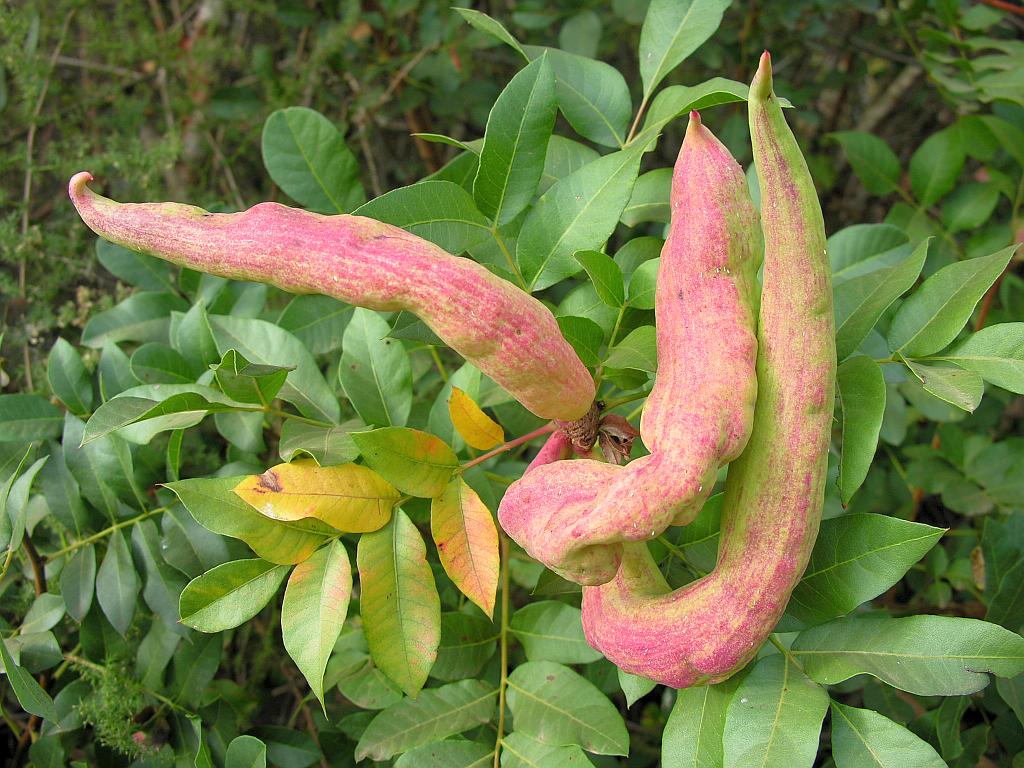
Notice the distinctive horn-shaped galls caused by Baizongia pistaciae. These unusual growths on the leaves and branches make the tree easy to spot in the wild.
Butterflies on the Caminito del Rey: A Hidden Highlight
The butterflies of the Caminito del Rey are another hidden treasure. Thanks to the variety of habitats, this section of the Gran Senda de Málaga hosts many species, including:
- Pandora fritillary (Argynnis pandora) – a large butterfly with vivid green, red, and orange wings, often mistaken for a bird in flight.
- Spanish festoon (Zerynthia rumina) – yellow and black, with a habit of resting on trackside plants.
- Spanish orange-tip (Anthocharis euphenoides) – bright yellow with glowing orange wingtips, easily recognisable even when flying.
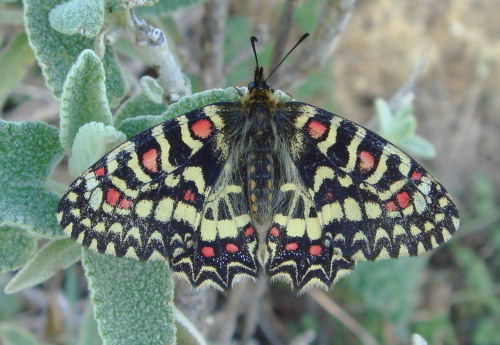
These butterflies are most active in spring and summer, making these seasons ideal for spotting them.
Best Time to See Wildlife on the Caminito del Rey
The Caminito del Rey can be visited year-round, but spring and early autumn are the best times to combine comfortable walking conditions with wildlife watching. Spring offers the chance to see blooming plants, abundant butterflies, and many birds in their nesting season. Autumn is particularly good for spotting raptors as they migrate.
Walking the Caminito del Rey: Nature and Adventure Combined
The Caminito del Rey walkway isn’t only about its thrilling bridges and dramatic scenery. It’s also one of the best places in Andalusia to see wildlife in its natural habitat. From raptors soaring above the cliffs to wild goats balancing on impossible ledges, and from colourful butterflies to unique Mediterranean plants, every step offers a new discovery.
Whether you’re a keen birdwatcher, a nature enthusiast, or simply curious about the wildlife along the Caminito del Rey, this spectacular walk is as much about nature as it is about adventure. For more information about natural parks, walking and wildlife in Spain have a look at the fantastic resources over at Wildside Holidays.
Frequently Asked Questions About Wildlife on the Caminito del Rey
Walking the Caminito del Rey offers the chance to spot griffon vultures, golden eagles, peregrine falcons, and Spanish ibex. Butterflies such as the Pandora fritillary also thrive along the walkway. There are even rare plants unique to Andalusia. The full article covers each group of species in more detail.
Yes, vultures are one of the main highlights. The cliffs host one of Spain’s largest populations of griffon vultures, often seen soaring directly above the gorge. The rarer Egyptian vulture and even the Rüppell’s vulture from Africa have also been recorded. More information on these raptors can be found in the article.
The best seasons are spring and early autumn. Spring brings butterflies, flowering plants, and nesting birds, while autumn is excellent for watching migrating raptors. Wildlife can be seen year-round, but these periods provide the most variety and activity.
Spanish ibex are the most common mammals and are often seen balancing on the cliffs. Mouflon, a wild sheep introduced from the Mediterranean islands, also live in the area. They are harder to spot, but their presence adds to the wild character of the walkway. Red deer are rarely seen but are certainly in the area.
Yes, the route is one of the most diverse for butterflies in Málaga. The colourful Spanish festoon, the bright orange-tip, and the large Pandora fritillary are just a few species found along the path. The article explains when and where you’re most likely to see them.
Absolutely. The walkway passes directly below nesting cliffs, giving birdwatchers close views of eagles, falcons, and vultures. The mix of habitats attracts many other species too. A full list of birds commonly seen is included in the article.
I’ve been living in this lovely area of Western Andalucia for the last 20 years or so and dedicate most of my time to the running of English language tourist information websites for the towns of Cádiz, Ronda, Grazalema, the famous or infamous Caminito del Rey, and also Wildside Holidays, which promotes sustainable and eco-friendly businesses running wildlife and walking holidays in Spain. My articles contain affiliate links that will help you reserve a hotel, bus, train or activity in the area. You don’t pay more, but by using them you do support this website. Thankyou!

